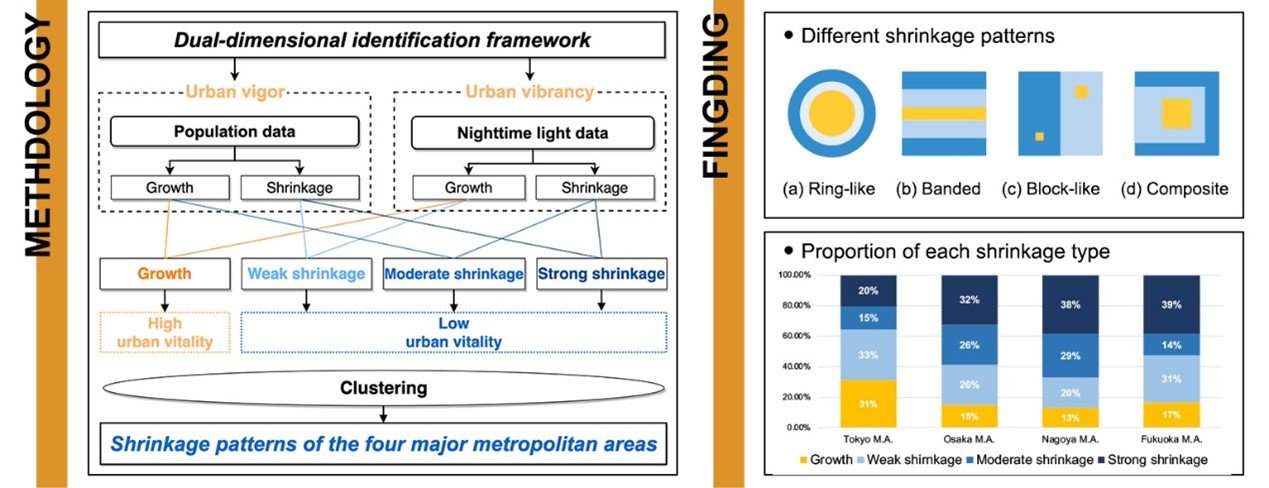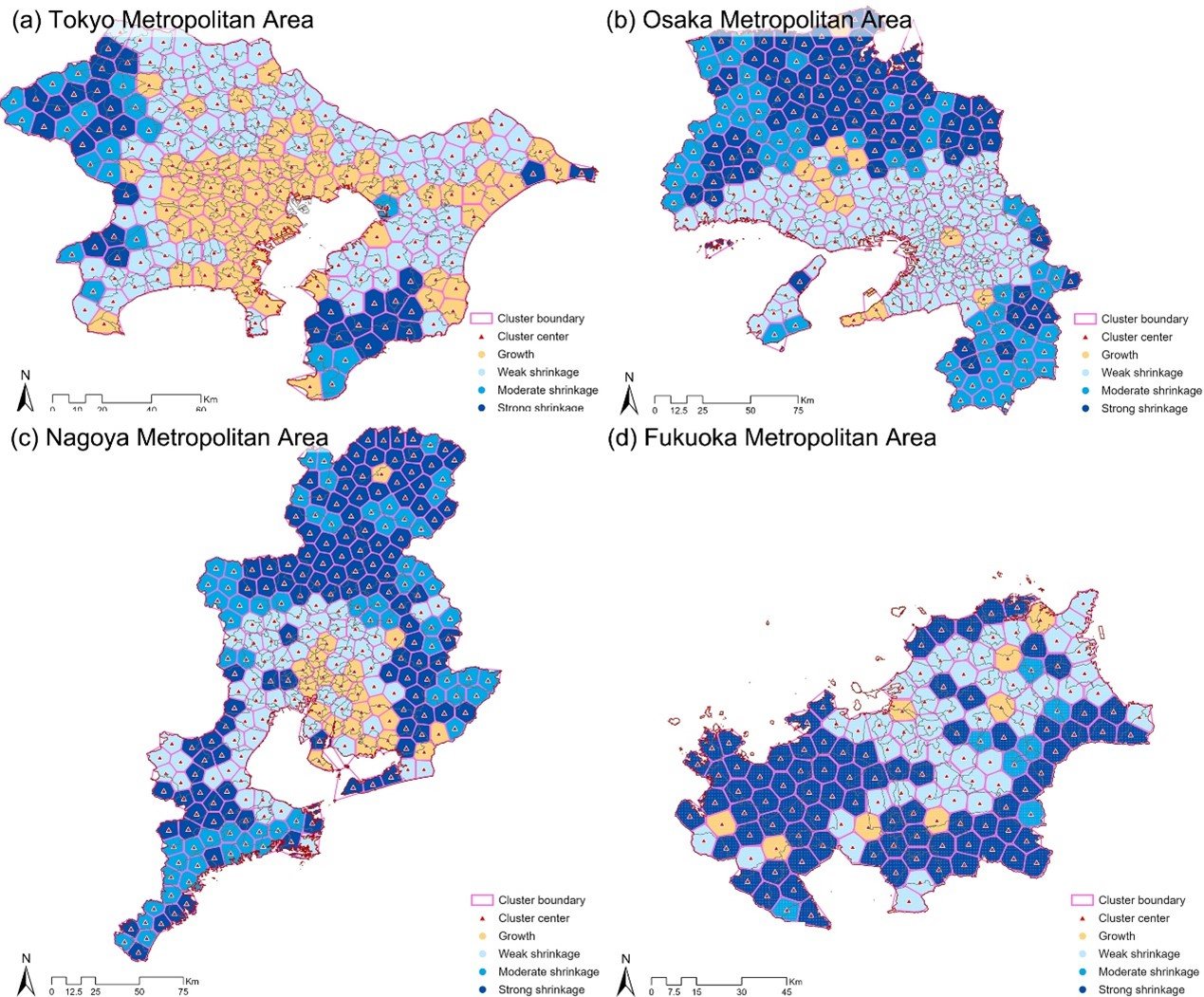 News
News
GPSS Student Publishes Study on Urban Shrinkage Patterns in Japan's Four Major Metropolitan Areas
GPSS masters' student Zheng Hao and his supervisor Professor Zhang Runsen, have published a study in International Journal of Applied Earth Observation and Geoinformation titled "Identification of shrinkage patterns in Japan's four major metropolitan areas based on nighttime light and population data". The study offers a novel approach to understanding urban shrinkage by integrating nighttime light (NTL) data and population raster data.

Highlights of Methodology and Findings
This research identifies distinct patterns of urban shrinkage across Japan's four major metropolitan areas--Tokyo, Osaka, Nagoya, and Fukuoka--by analyzing changes in urban vitality over nearly a decade (2012-2020).
The study reveals:
(1) Tokyo Metropolitan Area shows a ring-shaped shrinkage pattern, with the 23 wards at its core maintaining strong urban activity while peripheral areas experience population decline.
(2) Osaka Metropolitan Area shows a band-shaped shrinkage pattern, with shrinkage concentrated in northern and southern areas while core districts maintain economic dynamism.
(3) Nagoya Metropolitan Area shows a hybrid shrinkage pattern, combining elements of both Tokyo's ring-like shrinkage and Osaka's banded shrinkage.
(4) Fukuoka Metropolitan Area shows a block-shaped shrinkage pattern, with a clear east-west divide where the western regions experience more severe shrinkage.

By unveiling the spatial complexities of urban shrinkage, this study provides a crucial data-driven framework for urban planners and policymakers. It highlights the urgent need for tailored urban planning strategies to address the challenges of demographic and spatial changes in Japan's major metropolitan areas.
The full study can be accessed here: DOI: https://doi.org/10.1016/j.jag.2025.104391
Readers are invited to explore this research and engage in discussions on urban sustainability and policy responses to urban shrinkage.

 Japanese
Japanese